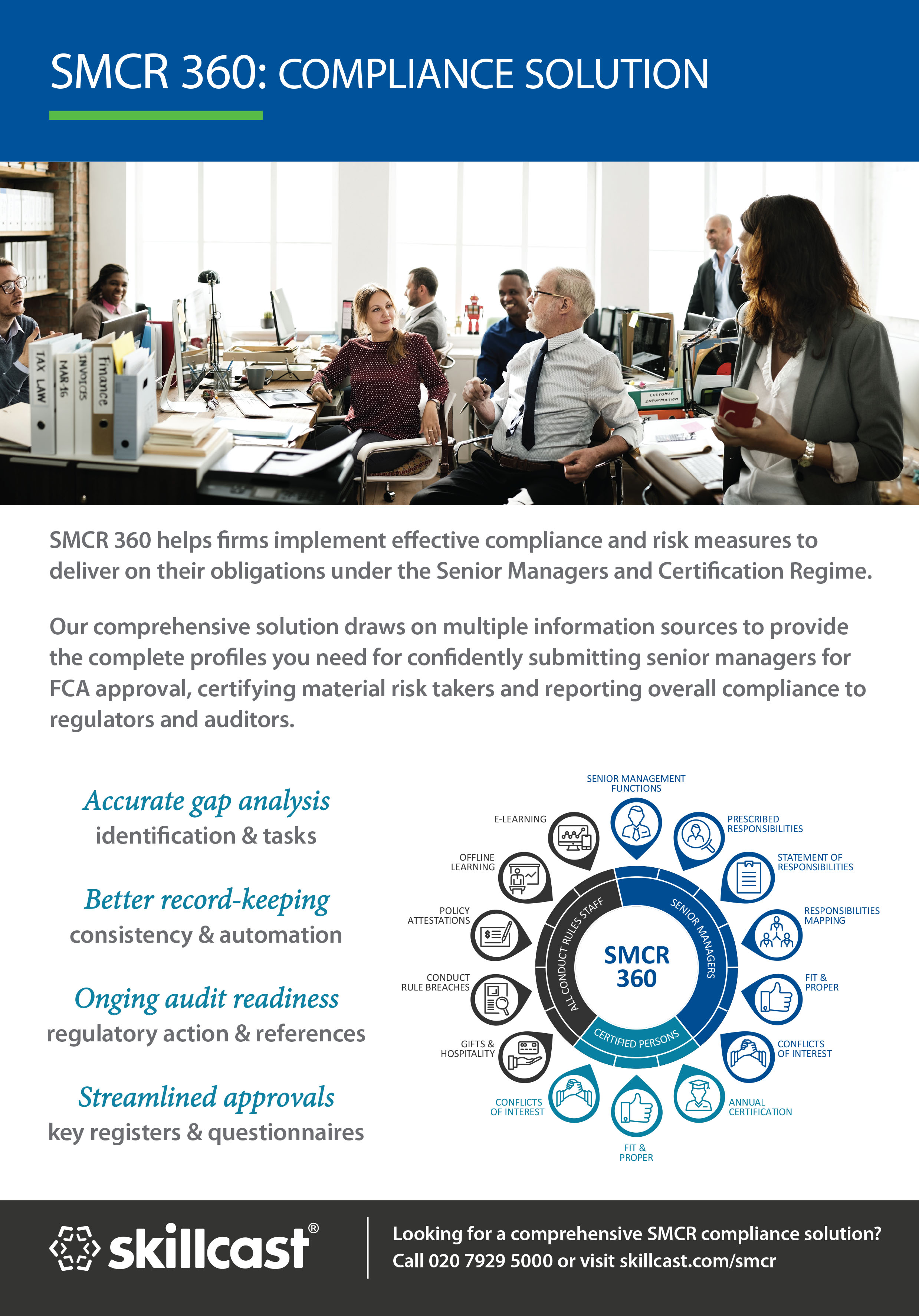In this article Vivek Dodd from Skillcast looks at the concept of Intelligent Learning. Ask any senior manager in your organisation how you can improve your corporate e-learning, and they’ll most likely say: “Just make it short and relevant!”
It’s a simple enough request, but quite complex to implement, as what’s relevant to one person may not be the same as for another. However, we’ve found a reliable way of achieving this using an approach that we call intelligent learning, which leverages elements of personalisation, adaptation, gamification and analytics. Let’s see how.
In building e-learning courses, we find that developers focus on compelling narrative, scenario-based learning activities, meaningful visuals, video, responsive design etc. These are all important, but what’s even more important to know is “what’s the point of this training?” Asking this question reveals the desired behavioural outcomes or competencies. For the course to be effective, the narrative, learning activities and assessment should be mapped to a clear set of these competencies.
These action points also provide the basis for introducing intelligent elements to personalise, adapt and gamify the training content, and generate valuable analytics. The intelligent course will:
- Identify what an employee needs to know based on what they do
- Assess how much of it the employee knows already
- Assess the employee’s confidence in that knowledge
- Deliver only those sections that they need and do not already know
Personalise
Identifying the competencies in the scope of the e-learning gives us the basis to personalise the course for each employee. The course can be made shorter and more relevant by asking each employee what they do at the outset. The competencies that they need may be defined simply by their job role/position or it may require deeper probing to understand what tasks they perform. This could take the form of a decision tree structure, which the employee is put through. It establishes which competencies apply to them, and selects the course content and assessments accordingly.
Adapt
Along with personalisation, the course content can be adapted – again to make the e-learning shorter and more relevant – by assessing the employee’s performance in learning activities. Such activities can be spread throughout the course, but it’s typical to use a pre-course assessment. This assessment can be limited to testing only with questions that match the employee’s competencies.
Another use for adaptive content is providing differentiated feedback in learning activities. For instance, an employee who is struggling with a basic concept could be provided with further reading on it.
identify some crucial information: those people in your business who are supremely confident but don’t actually know very much!
Pre-assessment
A pre-course assessment, which establishes an employee’s competence level to which the course content is adapted, needs to test them to a higher standard than a post-course assessment. If you are providing a cut-down course or allowing them to skip all the content, you really need to be sure that they are competent. To meet this higher standard, we insist that the employee is not just correct, but also confident in their answer. If they are correct and confident, we give them a bonus – if they are incorrect and confident, they get a minus score. By setting the pass-mark as correct and confident for all answers, you will weed out those who may be guessing and identify some crucial information: those people in your business who are supremely confident but don’t actually know very much!
Confidence levels
Upon completion of the pre-course assessment, we assess the scores, and adapt, remove or re-purpose the content on any given topic. This ensures that the employee gets just what they need to know and the business gets the certainty that all its people have been appropriately trained.
By delivering learning in an intelligent way, a course that may take a new starter 20 minutes to complete could drop to around eight minutes for a more experienced employee. This will save time and money, and make both your new starters and senior managers happy.

Analytics
By breaking down the course into competencies, and assessing against these, we can show the employees a detailed breakdown of their strengths and weaknesses. Whereas a standard course will tell the employee only the percentage that they have achieved, intelligent learning goes much further. The employee can see their performance in each area of the course.
They can also see how they performed against their peers, their highest scores and averages, and where they are positioned on a leader board.
Management Information
Intelligent learning produces a much higher level of detail and analytics to help identify knowledge gaps, spot red flags and feed into future training initiatives.
It provides a breakdown of performance against each competency at an individual level and across the business. It also shows confidence levels against knowledge and competencies, which makes it possible to have conversations with people who demonstrate poor understanding and yet report a high degree of confidence.
Delivery
The technology behind intelligent learning works within the standard SCORM framework. Therefore, such e-learning modules can be hosted and delivered on any SCORM-compliant LMS.





